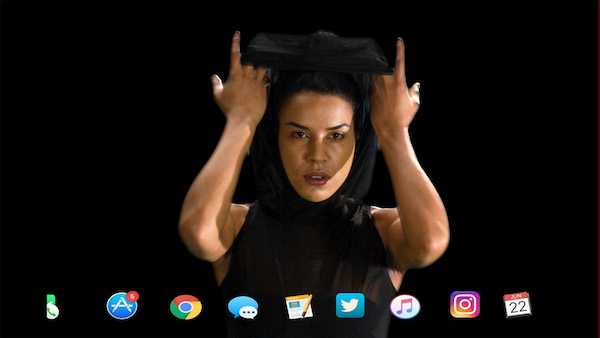Lynn Hershman Leeson has always been an artist simultaneously ahead of her time and very much a product of the present moment. From her revolutionary Breathing Machines in the early 1960s—the first sculpture works which incorporated sound—to her most recent video installation, Shadow Stalker, which investigates the use of the surveillance software PredPol, Hershman Leeson has been at the very forefront of technology, media and art. She is also an accomplished filmmaker, producing works like !Women Art Revolution (2010) as well as collaborating with actresses like Tilda Swinton and activist art groups like the Guerrilla Girls. It was my pleasure to speak with her about her life, work and
upcoming projects.
Sweetwood: You describe !Women Art Revolution as “a history that was not erased, but one not recorded in the first place.” Do you believe that statement applies to you personally, as well as all women artists?
Hershman Leeson: It is double-sided; being invisible allowed me a lot of freedom to do my work, but it also forced me to live at a poverty level and watch as the next generations took credit for all the work and research I did. I think lots of women were left out, not just me, but I think I was copied the most, and I also think it was personally damaging. I watched as men of my generation were collected and praised while I could not get any reviews, shows or sales. But—’She who laughs last’ is a good motto, and I’m laughing now.

Installation view, Lynn Hershman Leeson, Shadow Stalker, 2019, in Manual Override at The Shed, New York, November 13, 2019 – January 12, 2020. Photo: Dan Bradica
What are your feelings on being discovered some 50 years after the beginning of your career?
I’m really grateful to Peter Weibel who was the first one to have the courage to show all my work and give me my first real book. It was because of that show that people realized how much I had done that others took credit for… but as I mention I had a lot of freedom, and as almost no one bought my work, I still had it, and it was rather sensational to live long enough to see it appreciate and be appreciated.
You’ve noted that all of your work is political; do you believe that all art is or should be political
Absolutely, otherwise why do it? Art makes us see ourselves in our situations and replaces our belief systems when necessary. The definition of political, though, is not what you normally would think of, but yes, absolutely, political and hopeful. Political for me is that which brings an awareness of the toxicity or flaws in a culture and seeks innovative ways to point them out or change them, like bringing awareness of a surveillance algorithm that is destructive or a society that is repressive, and show what the issues are, and ways to create a shift.

Lynn Hershman Leeson, Installation view of Shadow Stalker in “Manual Override” at The Shed, 2019
I am personally obsessed with the created character of Roberta Breitmore, who was exorcised in 1978 following five years of existence. What would Roberta be doing today rather than in the 1970s?
Actually Roberta lived from 1972–1979. A lot of information about her dates is wrong.
She comes back periodically, I never know when. In 1993, for instance, she was a TeleRobotic doll called CybeRoberta. You can read about her or see her on my website. In 2005, she visited a plastic surgeon and had him draw on her face to see how she could look young again. And, in 2018, she went to Berlin, stayed in a hotel and tried to find a boyfriend.
In your newest interactive video installation, Shadow Stalker, you show the ways in which identity can be flattened to profile individuals. Does the future of technologies like PredPol scare you?
No, because people are working to overcome the restrictions and bring to light what the algorithmic violence really does to people, through legal [action]. In fact, there is now even an algorithmic justice league that was founded last year in Boston.

Lynn Hershman Leeson, Still from Shadow Stalker, 2019
What’s the next project after Shadow Stalker?
I converted my diaries to DNA. My next project will be working with Harvard on a project called Gravity’s End, which will be a drinking fountain that converts plastic-filled and contaminated water into pure drinkable water, one liter per minute. And some films, one on Leonora Carrington and the tarot, another about bio-genetics.
Lynn Hershman Leeson’s work is currently on exhibition at the de Young Museum in San Francisco, The New School in New York, ZKM Gallery in Germany, and she will have a solo show at The New Museum in 2021.


